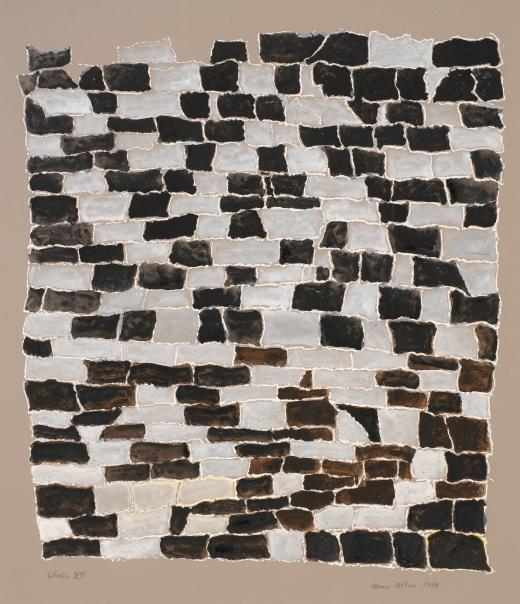REFLECTION AND DISTRIBUTION: THE GRAPHIC TERRITORY
Through aquatints, lithographs, silkscreen and offset prints, Albers was able to explore by other means some of the visual concepts that had already appeared in her textile pieces. Her playful experimentations with various chemical processes of engraving ran parallel to her collaboration with some of the finest printers of her time. Albers thus found a means for reflecting on the whole of her earlier oeuvre, as shown by the Connections portfolio, where she offered a concise synopsis of the great visual landmarks of nearly six decades of practice.
In printing, Albers found the ideal element for trying out new compositional patterns and almost infinite visual variations. Seeking higher levels of graphic complexity that reveal structural connections of lines and threads, of drawing and weaving, she multiplied triangular and rhomboid patterns. These forms alternate with the study of intricate lines evoking mazes, knots, and tangled threads in other works. Her designs are often times translated into textile models for large-scale production in collaboration with contemporary manufacturers—a practice whose continuity the artist ensured through the activities of The Josef and Anni Albers Foundation. Through her collaborations with the industry, Albers wanted to situate her work within reach of the public at large, and so demonstrated her commitment to the perennial idea of the Bauhaus that art and design are to be considered as one single field of form-production, and that prototypes should be developed to permit an egalitarian dissemination of artistic forms. The parallelism between the industrialization of the textile product and the graphic object, the possibility of democratizing the artwork, and an implicit critique of creative individualism, all come to the fore during this final period of Albers’s oeuvre.

